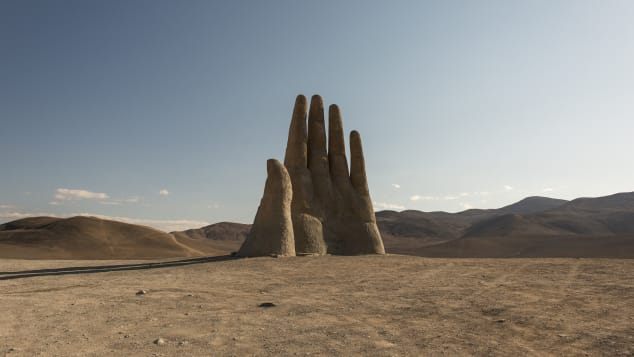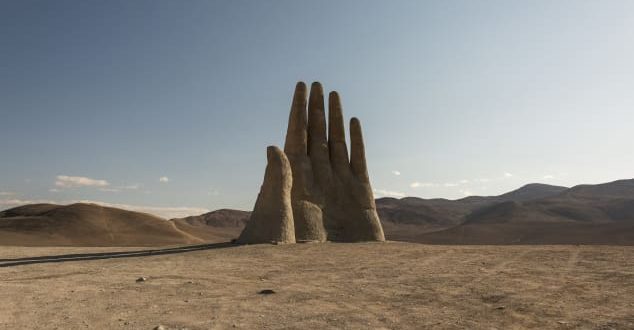It’s dry, barren and sparse. The otherworldly landscapes of northern Chile’s Atacama Desert could easily be from Mars.
It is the driest desert in the world outside of the polar regions, and its 40,500-odd square miles of red and burnt-orange plains stretch as far as the eye can see.
Learning English opens new doors for billions around the world
David Crystal, the British linguist and academic, has calculated that there are three times more people learning English than there are native speakers of the language. Why?
The drive through the desert marks a stretch of the Pan-American Highway, a network of roads measuring around 19,000 miles in total; an admirable notch on any road-trip fiend’s travel belt.
The lunar-esque landscape has been used by NASA for testing martian rovers, while its smooth sandy dunes draw surfers looking for a different kind of wave. By night, the sky is a kaleidoscopic wonder of constellations and attracts many a stargazer.
Driving through the desert can be disorienting, and, at first, weary travelers may mistake its most unusual monument for a mirage.
It rears up from the ground as if a giant is drowning in quicksand, reaching an outstretched hand in a desperate last plea for help.
But on closer inspection, visitors will see that the “Mano del Desierto” — “Hand of the Desert” — is, in fact, very real.
The thumb and four fingers are an abrupt vertical interruption in the desert, a striking anomaly in the vast, otherwise uninterrupted flat swathes of sand.
Impressive dimensions

“Mano del Desierto,” an unexpected sculpture in Chile’s Atacama Desert, is 36 feet tall.
Courtesy Plan South America
The larger-than-life hand towers an impressive 36 feet (11 meters). It’s taller than an NFL goal post and nearly as high as a yellow school bus is long. The nearest city of Antofagasta, still some 46-odd miles away, lays claim to the imposing structure.
Chilean sculptor Mario Irarrázabal was asked by the townspeople to create a monument for the vast region of Atacama. And so he created the “Hand of the Desert,” protruding starkly from the sand and reaching for the brilliant blue sky.
Financed by local organization Corporación Pro Antofagasta, the hand was constructed in 1992, from concrete and iron.
The meanings of the monument are unknown. Some say it is meant to be a reminder that humans should be humbled by nature and the elements. Others are convinced it is a display of humans rising against the odds.
Mario Irarrázabal studied in the US, where he lived for five years, as well as in Italy and Germany. He returned to Chile in the late 1960s to dedicate his life to sculpting, and rejected a life in the clergy (his father was a church official, and he spent many years studying in church schools). He has won numerous awards for his striking work.
Unfortunately, despite numerous signs urging tourists to refrain from defacing the monument, locals rally twice yearly to clean the sculpture, which is regularly covered in profanity-ridden graffiti.
The hand may strike a solitary figure in the desert, but actually it’s part of a pair.
It’s right counterpart sits in Uruguay. Built a decade earlier, in Punta del Este near the Atlantic Sea, an identical four fingers and thumb stretch for the skies, this time rising from the beach.
Getting there
To get to the sculpture from Antofagasta, take Route 26 or 28, and drive until the road joins Route 5. The hand sits between mile 1309 and 1310, which are handily marked by the roadside.
Once you hit a road sign reading “Escultura,” there will be a path off to the right, which is the track to head down to encounter the hand.
The attraction has become increasingly popular in recent years, as more tour guides include the hand on their clients’ itineraries.
Harry Hastings, founder of Plan South America, says his agency always tries to incorporate a visit to the “Mano del Desierto” for any guests traveling to the Atacama Desert.
“It’s an important landmark for our guests, more of whom are choosing to road trip around Latin America and include the PanAm Highway,” he explained. “Not just culturally significant, but visually too.”
–
CNN
 UAE BARQ برق الإمارات – نبضك
UAE BARQ برق الإمارات – نبضك


